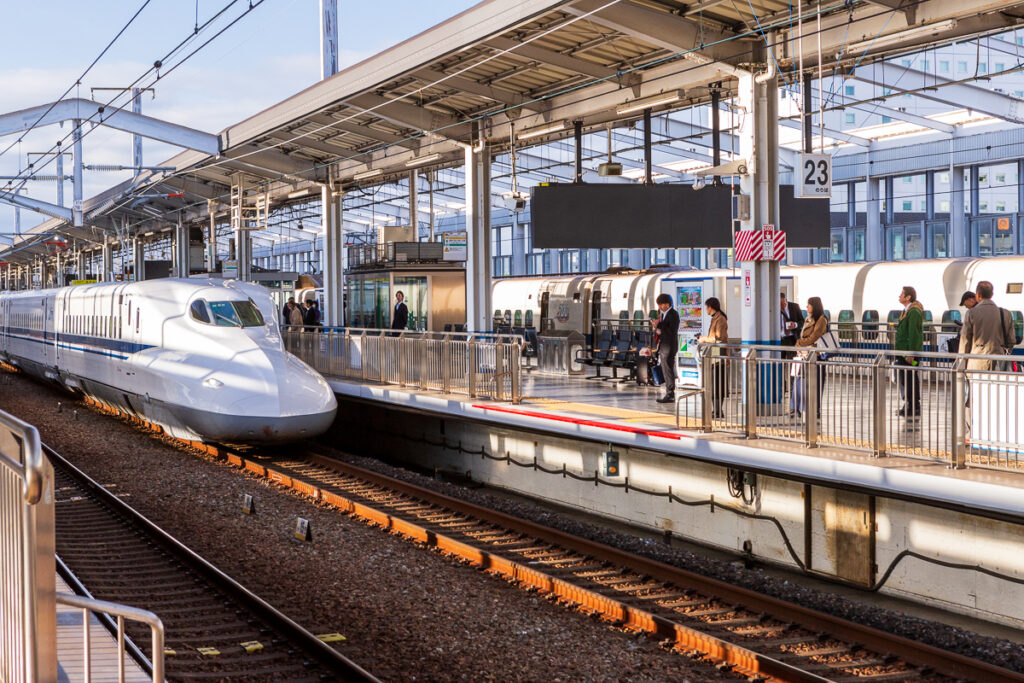
Up early to catch the Shinkansen (bullet) train for Kyoto. The ride took less than 15 minutes.
After arriving in Kyoto and dropping our luggage at the hotel we hurried on to the Zen Buddhism temple Koinzan Saihoji also called Kokedera (moss garden) for the early morning ceremony. Zen Buddhist temples do not have statues of Buddha whereas other sects do.
This temple was originally the villa for Prince Shotoku who was the builder of the oldest temple in Osaka, which we had visited. He lived in the 6th century.
The gardens are entirely covered with moss of about 120 varieties. It is built on two levels – the upper level and the lower level which surrounds a pond. The pond is shaped like the Chinese letter SHIN meaning heart.
We have been fortunate to visit this temple twice before. It is one of the most beautiful gardens I have been in. Other years the colors were peaking but thais year we were a few days early. The visit starts with a Buddhist ceremony. As part of the ceremony attendees copy a sutra in calligraphy, we add our name, address and our wish. These are kept forever in a pagoda on the grounds. No photos are allowed during the ceremony.
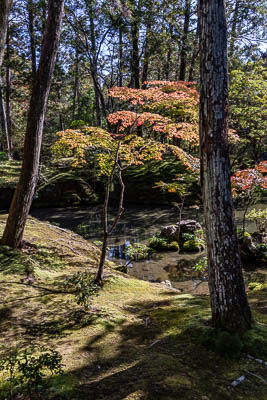
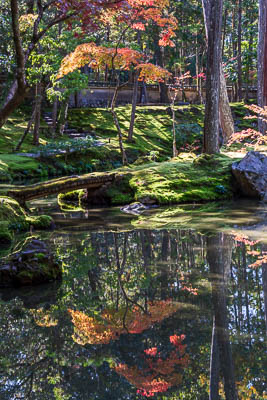

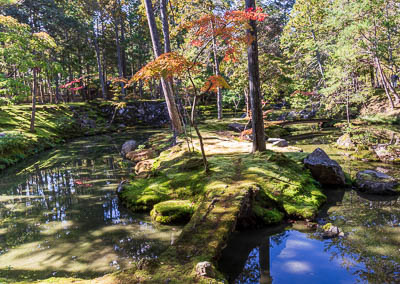
After visiting the temple we stopped for some soba noodles with buckwheat tea and then on to the bamboo forest, Otagi Nenbutsu-ji Temple, the Golden Pavilion and we ended our day at a blood temple, Shoden ji.
We had walked in the bamboo forest on earlier visits, and these photos are from 2016.
Arashiyama Bamboo Forest
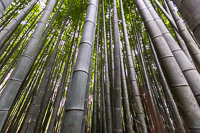
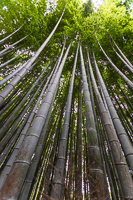
After a walk through the Bamboo Forest and area around, we drove over to the Golden Pavilion. Neither Hugh nor I wanted to fighting the crowds, so we let Tim go in while we enjoyed an ice cream cone. These photos are from our 2016 visit.
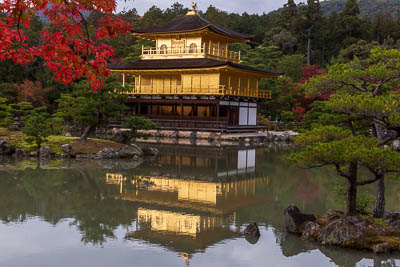
We then went to Otagi Nenbutsu-ji Temple. What was interesting about this temple was all of these “rakan” statues ( which represent Buddha’s desciples) date back to the late 20th century and were not done by professional sculptors. This temple has a long tortured history, but in the 1950s (after many moves and rebuilds) a new head priest, Kocho Nishimura was installed, He was not only a priest but an accomplished sculptor of Buddhist statues. He invited visitors to the temple to carve their own sculptures under his guidance. All of the pictured statues were added in the 1980s and 1990s but look much older as the climate is conducive to growing moss. I especially liked many of the statues as many had a humorous expressions.

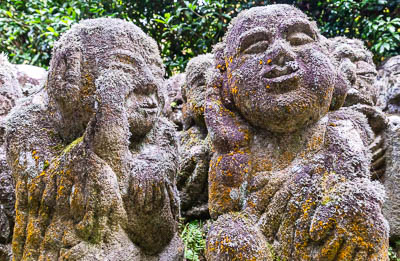
RIGHT: This is a woefully inadequate photo. It doesn’t show the 1200 rakans.
LEFT: I love how this looks like one is whispering to the other.

Thanks to Timothy we were introduced to the blood temples. There are five blood temples which have ceilings created from the bloody floor of the Fushimi Castle which dates back to the 17th century.
At that time a fight between two warring parties Tokugawa Ieyasu and Istsunari Mitsunari. Mitsunari had captured the Osaka Castle and was seeking to capture Kyoto, so he could consolidate his power in the old capital. To accomplish this he had to take control of Fushimi Castle under the control of Tori Mototada (a Tokugawa supprter).
Mototada defended the castle to give time to Tougawa Ieyasu to move his forces into a better position to defend Kyoto. Mototada fought a fierce battle with Mitsunari, but a betrayal from within compromised his ability to defend the castle and when it was apparent that the castle was lost, Mototada, his family and 370 warriors committed seppuku, their blood soaking the floorboards.
Tougawa eventually defeated Mitsunari and the remains of the castle were preserved for later use in the construction of five temples around Kyoto as a tribute to the honor the fallen warriors.
We visited three of the five temples, one being closed for renovation and the fifth a distance from where we were in Kyoto. I found the temples solemn places, with beautiful gardens and an incredible sense of peace. You could see the bloody footprint and handprint in the ceiling. In the last temple we visited, where photos were not allowed, you could see the head attached to the body of the fallen warrior. That was most likely Mototada as it was customary in seppuku for the warrior to cut across his stomach and as this was a slow and painful way to die, then another warrior beheaded the victim. The only person not beheaded was the last warrior and that was always the leader.
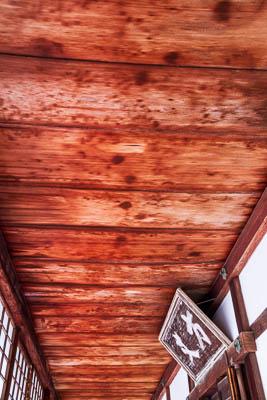

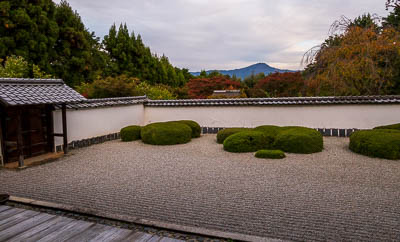

ABOVE LEFT – the bloodied ceiling
And this concludes our first day in Kyoto which actually started with a train ride from Osaka. No wonder I came home tired!
